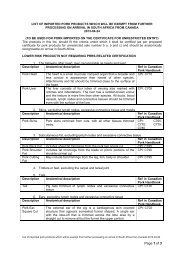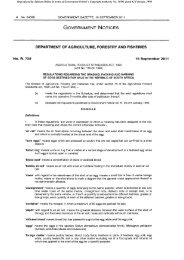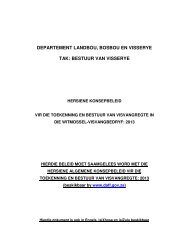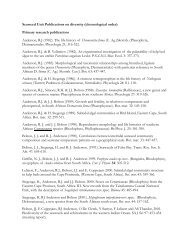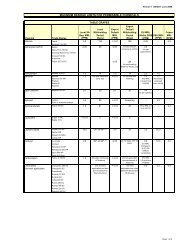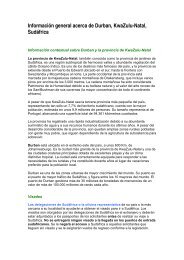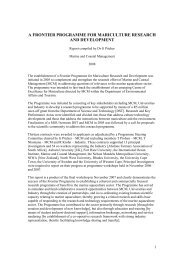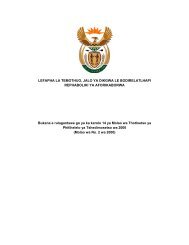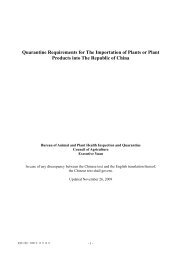You also want an ePaper? Increase the reach of your titles
YUMPU automatically turns print PDFs into web optimized ePapers that Google loves.
K<br />
rill is the term given to swarms of shrimp-<br />
like creatures, called euphausids, that form<br />
the staple food of whales and other Antarctic<br />
marine life. Krill is a Norwegian whaling term<br />
meaning ‘tiny fish’, but this is a misnomer as they<br />
are not fish but crustaceans. Krill are large species<br />
of plankton and have a collective mass many times<br />
that of the global human population. They are a<br />
concentrated source of energy-rich food which is<br />
just starting to be tapped by humans.<br />
Antarctic krill, Euphausia superba, is the largest and most<br />
common species of krill in the Southern Ocean. It forms dense<br />
schools between the Antarctic continent and Subantarctica.<br />
Further north, in warmer waters, they are replaced by four<br />
other Euphausia species and Thysanoessa macrura. Further<br />
north in the subtropics they give way to Euphausia lucens<br />
and Euphausia similis, species with antennae that light up so<br />
that their swarms emit blue-green light.<br />
Biology of Euphausids<br />
Euphausids, together with crabs and rock lobsters, belong to<br />
the superorder Eucarida in which a shield-like structure<br />
called the carapace covers the whole of the head and<br />
thorax, fusing it into a solid unit. Euphausids are per-<br />
manently planktonic and swim using flaps<br />
(pleopods)<br />
C O A S TA L A N D M A R I N E L I F E – A N I M A L S : I N V E RT E B R A T E S – C R U S T A C E A N S<br />
Krill 3B<br />
on the abdomen. Their thoracic limbs are armed with stiff<br />
hairs and are held to form a ventral basket through w h i c h<br />
water is sieved as they swim along, enabling the capture of<br />
smaller planktonic plants and animals on which they feed.<br />
Thus they entrap their food in much the same way that baleen<br />
whales feed on krill.<br />
Antarctic krill survive the inhospitable Antarctic winters by<br />
hiding for several months under the pack ice. Here, in icy<br />
nooks and crevices, they feed on algal cells that grow in<br />
dense concentrations in spite of the poor light conditions.<br />
In the summer months, from about December to May, the<br />
ice melts and the phytoplankton blooms due to the long light<br />
hours and the upwelling of nutrient-rich water. The krill in<br />
turn multiply into huge swarms that occupy a central position<br />
in the Southern Ocean food web. Krill are the principal food<br />
for at least five species of baleen whales, three species of<br />
seals, twenty species of fish, three species of squid and<br />
many different birds.<br />
Lifecycle of Antarctic Krill<br />
During spring, in October and November, males of the<br />
Antarctic krill implant their sperm in newly moulted females,<br />
while they still have soft shells. Each female stores the male’s<br />
sperm and later releases it to fertilise her eggs. She produces<br />
many sets of eggs, totalling more than 20 000 during the<br />
summer spawning. When released into the sea, the eggs sink<br />
hundreds of metres to depths where few predators dwell.<br />
There they hatch into nauplii larvae which subsist initially on<br />
the yolk from the eggs. Later they swim towards the surface to<br />
find phytoplankton on which they feed. Antarctic krill develops<br />
slowly through five larval moults to the adult form and re a c h e s<br />
a mature length of 60 mm after three to four years.<br />
Krill – staple food of the Southern Oceans





